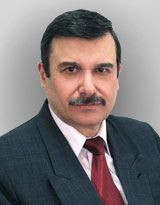Симуляционное обучение в медицине: от истории к значимой роли в образовании
https://doi.org/10.51922/1818-426X.2025.3.105
Аннотация
Симуляционные технологии в практическом обучении медицинских работников являются важнейшим инструментом современного медицинского образования. Представлен обзор литературы, посвящённый применению симуляционного обучения в сфере медицинского образования, проанализированы статьи о симуляционном обучении на уровне специалитета и непрерывного последипломного медицинского образования. Исследования продемонстрировали, что обучение с использованием симуляционных технологий приводит к повышению качества подготовки будущих врачей. С открытием симуляционных центров и внедрением аттестации с использованием симуляционных технологий на базе медицинских университетов по всей стране симуляционное обучение становится базовым в структуре медицинского образования Республики Беларусь. В связи с расширением возможностей перспективы применения симуляционных технологий существенно расширяются, существует необходимость разработки новых методов, обеспечивающих повышение результативности подготовки специалистов, в том числе медицинских кадров высшей квалификации.
Список литературы
1. Aggarwal, R., Darzi A. Technical-skills training in the 21st century // N Engl J Med. – 2006. – Vol. 355(25). – Р. 2695–6.
2. Байдаров, А. А., Вронский А. С., Лазарьков П. В., Асташина Н. Б., Шамарина А. М. Симуляционное обучение в медицине: прошлое, настоящее и будущее // Пермский медицинский журнал. – 2023. – Т. 40, № 6. – C. 53–60.
3. Kothari, L. G., Shah K., Barach P. Simulation based medical education in graduate medical education training and assessment programs // Prog Pediatr Cardiol. – 2017. – P. 33–42.
4. Hamstra, S., Philibert I. Simulation in graduate medical education: understanding uses and maximizing benefits // J Grad Med Educ. – 2012. – P. 539–540.
5. Lateef, F. Simulation-based learning: just like the real thing // J Emerg Trauma Shock. – 2010. – P. 348–352.
6. Are, C. Reflections on cancer/healthcare landscape in India on the occasion of 75 years of independence: glorious past and a future filled with pride and optimism // Indian J Surg Oncol. – 2022. – P. 96–100.
7. Owen, H. Early use of simulation in medical education // Simul Healthc. – 2012. – P. 102–116.
8. Cooper, J. B., Taqueti V. R. A brief history of the development of mannequin simulators for clinical education and training // Postgrad Med J. – 2008. – P. 563–570.
9. Rosen, K. R. The history of medical simulation // J Crit Care. – 2008. – P. 157–166.
10. Bradley, P. The history of simulation in medical education and possible future directions // Med Educ. – 2006. – P. 254–262.
11. Safar, P. Ventilatory efficacy of mouth-to-mouth artificial respiration; airway obstruction during manual and mouth-to-mouth artificial respiration // J Am Med Assoc. – 1958. – P. 335–341.
12. Safar, P., Escarraga L. A., Elam J. O. A comparison of the mouth-to-mouth and mouth-to-airway methods of artificial respiration with the chest-pressure arm-lift methods // N Engl J Med. – 1958. – P. 671–677.
13. Grenvik, A., Schaefer J. From Resusci-Anne to SimMan: the evolution of simulators in medicine // Crit Care Med. – 2004. – P. 56–57.
14. Buck, G. H. Development of simulators in medical education // Gesnerus. – 1991. – P. 7–28.
15. Gordon, M. S., Forker A. D., Gessner I. et al. Teaching bedside cardiologic examination skills using «Harvey», the cardiology patient simulator // Med Clin N Am. – 1980. – P. 305–313.
16. Bienstock, J., Heuer A. A review on the evolution of simulation-based training to help build a safer future // Medicine (Baltimore). – 2022. – P. 1–6.
17. Barrows, H. S., Abrahamson S. The programmed patient: a technique for appraising student performance in clinical neurology // J Med Educ. – 1964. – P. 802–805.
18. Gaba, D. M., DeAnda A. A comprehensive anesthesia simulation environment: re-creating the operating room for research and training. Anesthesiology. – 1988. – P. 387–394.
19. Lioce, L., Lopreiato J. (Founding Ed.), Downing D. et al. Healthcare Simulation Dictionary. 2nd Edition // Agency for Healthcare Research and Quality. – 2020.
20. McGaghie, W. C., Issenberg S. B., Petrusa E. R., Scalese R. J. Effect of practice on standardised learning outcomes in simulation-based medical education // Med Educ. – 2006.
21. Jones, Felipe & Passos-Neto, Carlos & Braghiroli, Odonne. Simulation in Medical Education: Brief history and methodology // Principles and Practice of Clinical Research Journal. – 2015. – P. 56–63.
22. Gaba, D. M. The future vision of simulation in healthcare // Simul Health. – 2007. – P. 126–135.
23. Nash, D. B., Joshi M., Ransom E. R., Ransom S. B. The Healthcare Quality Book: Vision, Strategy, and Tools. – Washington. – 2019.
Рецензия
Для цитирования:
Бутько В.В. Симуляционное обучение в медицине: от истории к значимой роли в образовании. Медицинский журнал. 2025;(3):105-108. https://doi.org/10.51922/1818-426X.2025.3.105
For citation:
Butsko V.V. Simulation training in medicine: from history to a significant role in education. Medical Journal. 2025;(3):105-108. (In Russ.) https://doi.org/10.51922/1818-426X.2025.3.105






